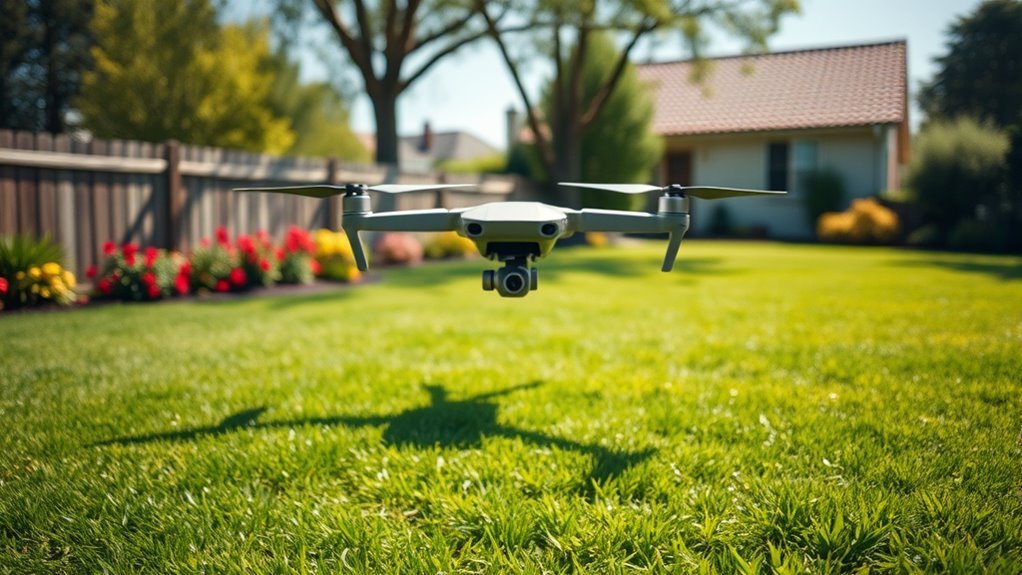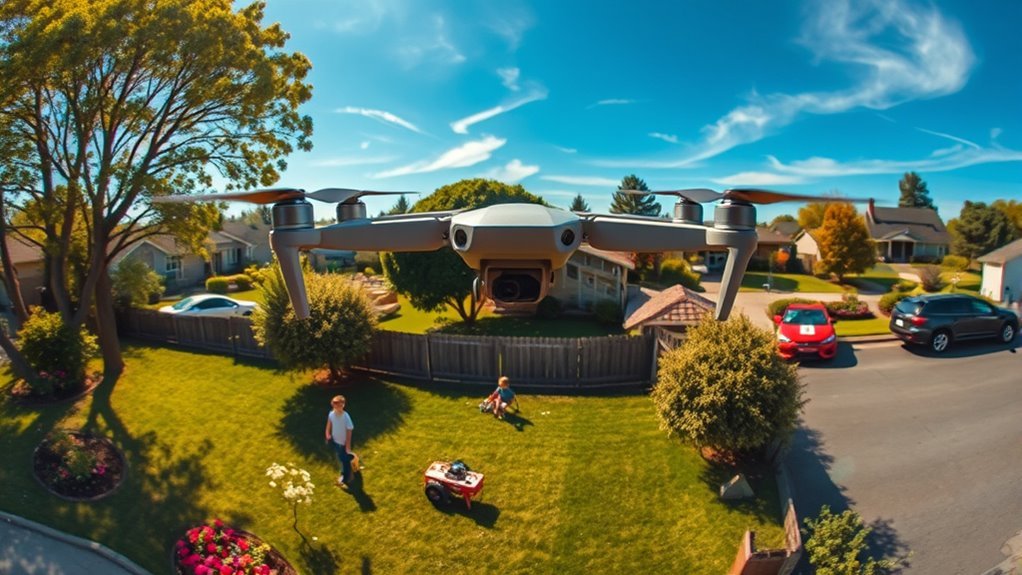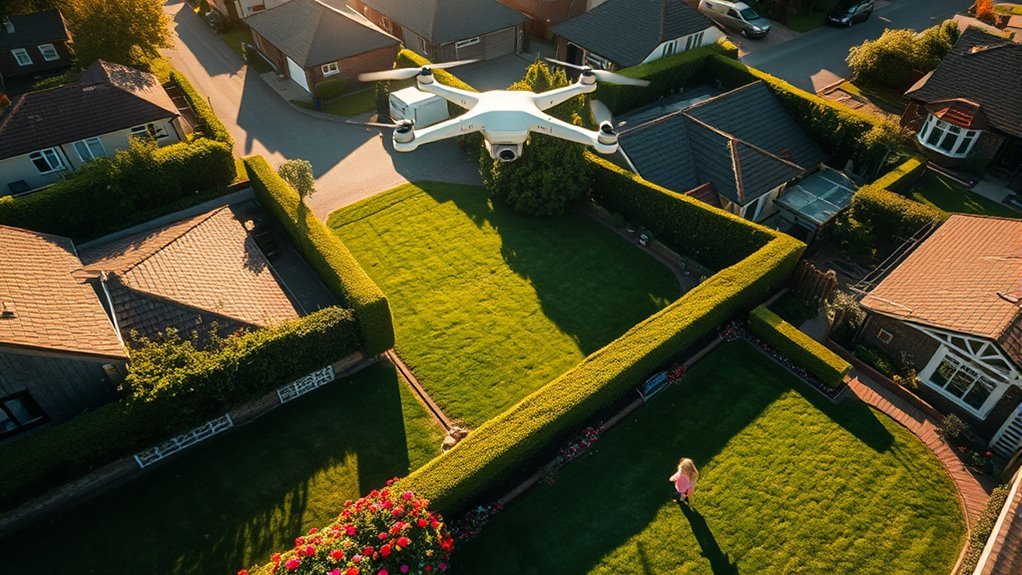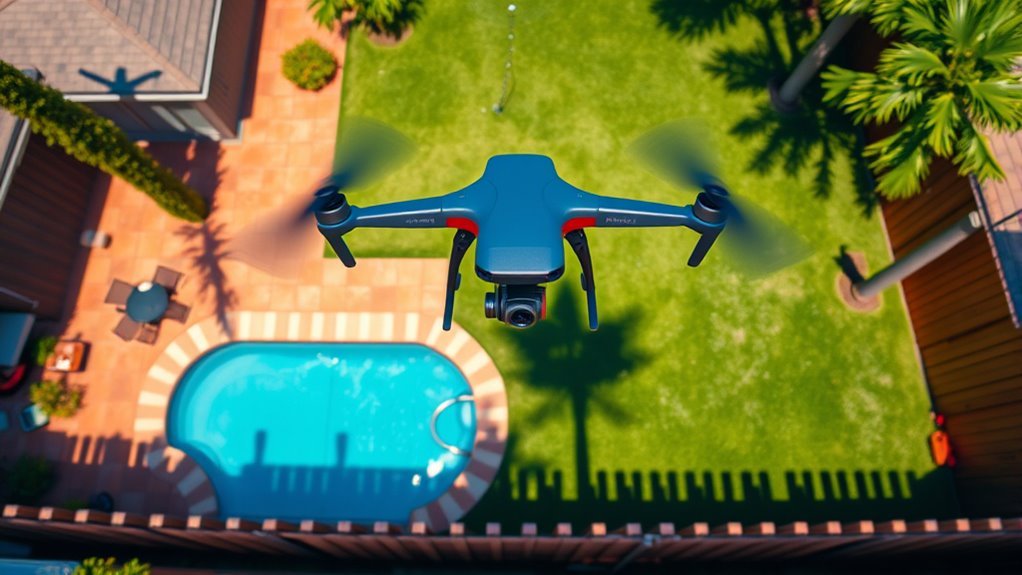You can fly your drone over private property as low as federal and state laws permit, but the FAA generally limits drone altitude to 400 feet above ground level. Some states set higher minimum altitudes to protect privacy, like California’s 100 feet or New York’s 200 feet. You must avoid capturing images that infringe on a person’s privacy or property rights. Flying responsibly prevents legal trouble and safety risks. Understanding these rules will help you operate with confidence and compliance.
Understanding Federal Aviation Regulations for Drone Flights

Federal Aviation Regulations (FARs) set the legal framework for operating drones in U.S. airspace, and understanding these rules is essential before flying over private property. You must comply with federal guidelines that dictate drone altitude restrictions to guarantee safety and legal operation. Specifically, FARs limit your drone’s altitude to a maximum of 400 feet above ground level, except when flying within a 400-foot radius of a structure, where you can fly higher but must maintain a safe distance. These regulations are designed to prevent interference with manned aircraft and protect public safety. By adhering to these federal guidelines, you retain the freedom to operate your drone responsibly while respecting controlled airspace boundaries. Ignorance of these rules can lead to penalties, so thorough knowledge is your first step.
State and Local Laws Affecting Drone Altitude Over Private Property

While federal regulations establish baseline altitude limits for drone operations, you must also consider state regulations and local ordinances that can impose additional restrictions over private property. These laws vary widely, sometimes limiting how low you can fly or requiring specific permissions. Ignoring them risks penalties and infringes on your operational freedom.
| Jurisdiction | Typical Altitude Restriction | Notable Condition |
|---|---|---|
| California (state) | Minimum 100 feet | Exceptions for emergency uses |
| New York (local) | No drone below 200 feet | Special zones near airports |
| Texas (state) | No altitude limit specified | Local ordinances may apply |
| Florida (local) | Minimum 150 feet | Drone permits required |
Always verify both state and local laws before flying low over private property.
Privacy Considerations When Flying Drones Near Homes

How close can you legally fly a drone near someone’s home without violating their privacy? While federal regulations primarily govern drone operation, drone privacy concerns hinge on state laws and common law principles protecting individuals from intrusive aerial surveillance. You must avoid capturing images or videos that intrude upon private spaces where there is a reasonable expectation of privacy, such as backyards or through windows. Operating your drone at altitudes that minimize detailed observation reduces the risk of infringing on privacy rights. Remember, even if you’re within legal altitude limits, unauthorized aerial surveillance can lead to civil liability. Prioritize respecting boundaries to maintain your freedom to fly responsibly, balancing your right to operate drones with the privacy rights of homeowners.
Best Practices for Safe and Respectful Drone Operation
Many drone operators underestimate the importance of adhering to established safety and respect protocols when flying near private property. Maintaining proper drone etiquette and ensuring flight safety not only protects your freedom to fly but also respects others’ rights. To operate responsibly, you should:
- Always check local regulations and airspace restrictions before flight.
- Maintain visual line-of-sight with your drone to prevent collisions.
- Avoid flying directly over people or private property without permission.
- Respect privacy by not capturing images or videos without consent.
Consequences of Violating Drone Altitude Restrictions
Ignoring drone altitude restrictions can lead to serious legal and safety repercussions. When you fly below mandated altitudes over private property, you risk infringing on property rights, which may prompt owners to take legal action. Regulatory bodies enforce these altitude limits to balance your freedom with others’ privacy and safety. Violations could result in penalties such as fines, suspension of your drone license, or even criminal charges depending on the severity. Beyond legal repercussions, flying too low increases collision risks with people, structures, or other aircraft, jeopardizing public safety. To maintain your operational freedom without conflict, adhere strictly to altitude guidelines. Respecting these boundaries protects your rights and guarantees the responsible use of airspace over private properties.

